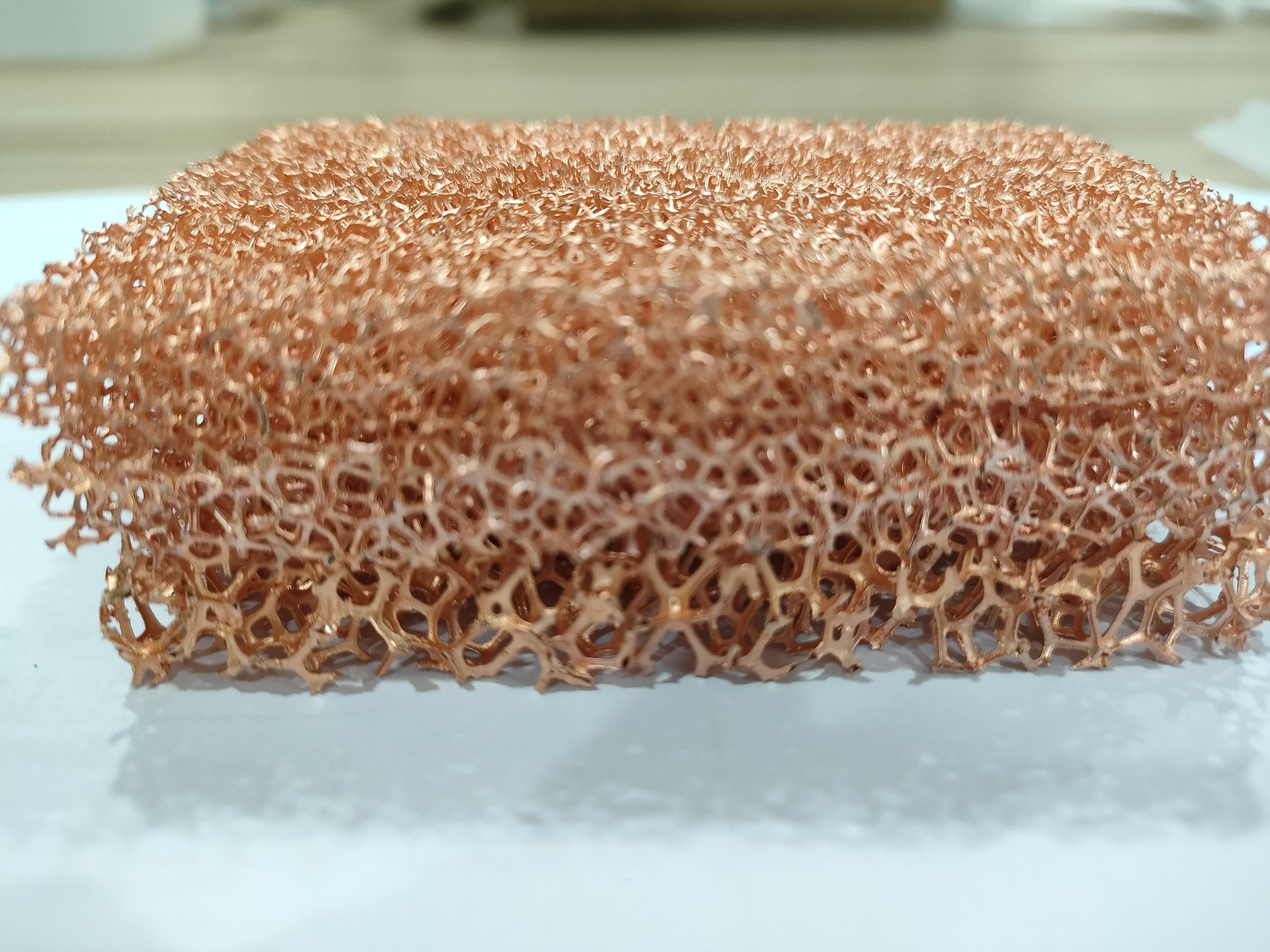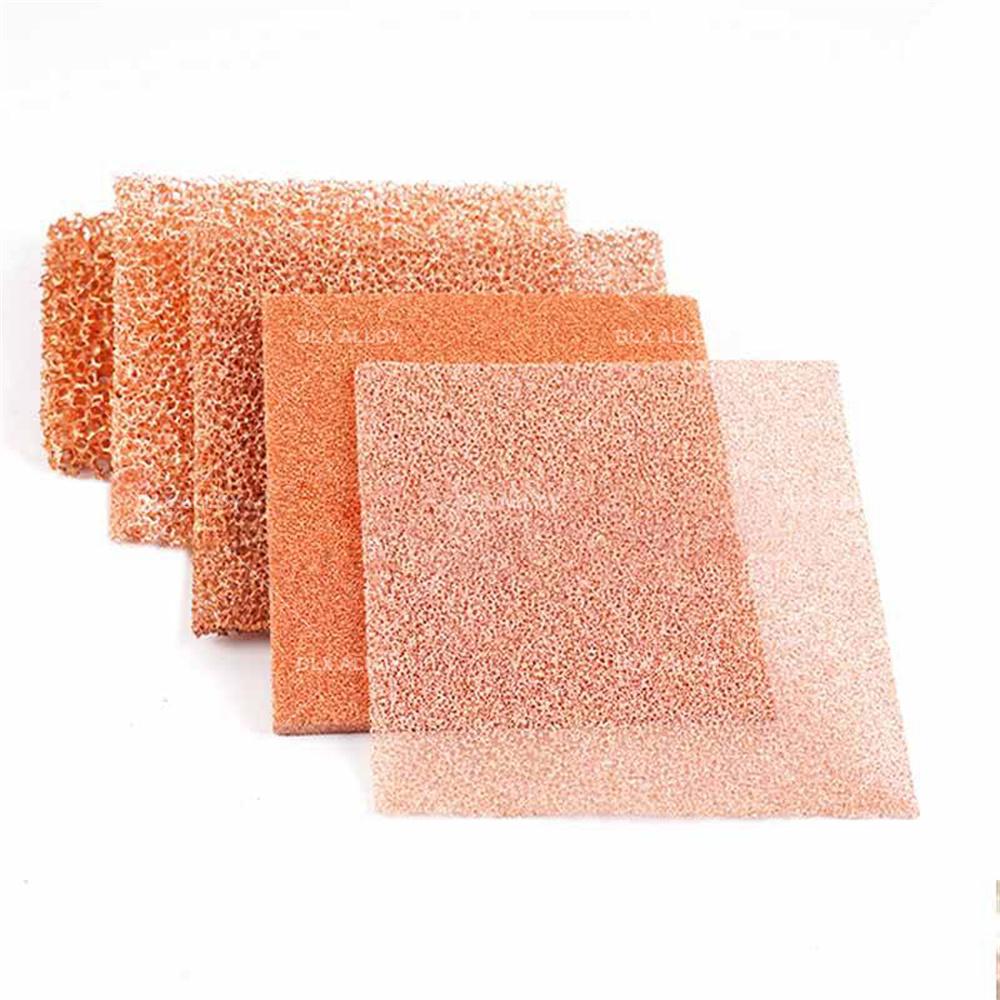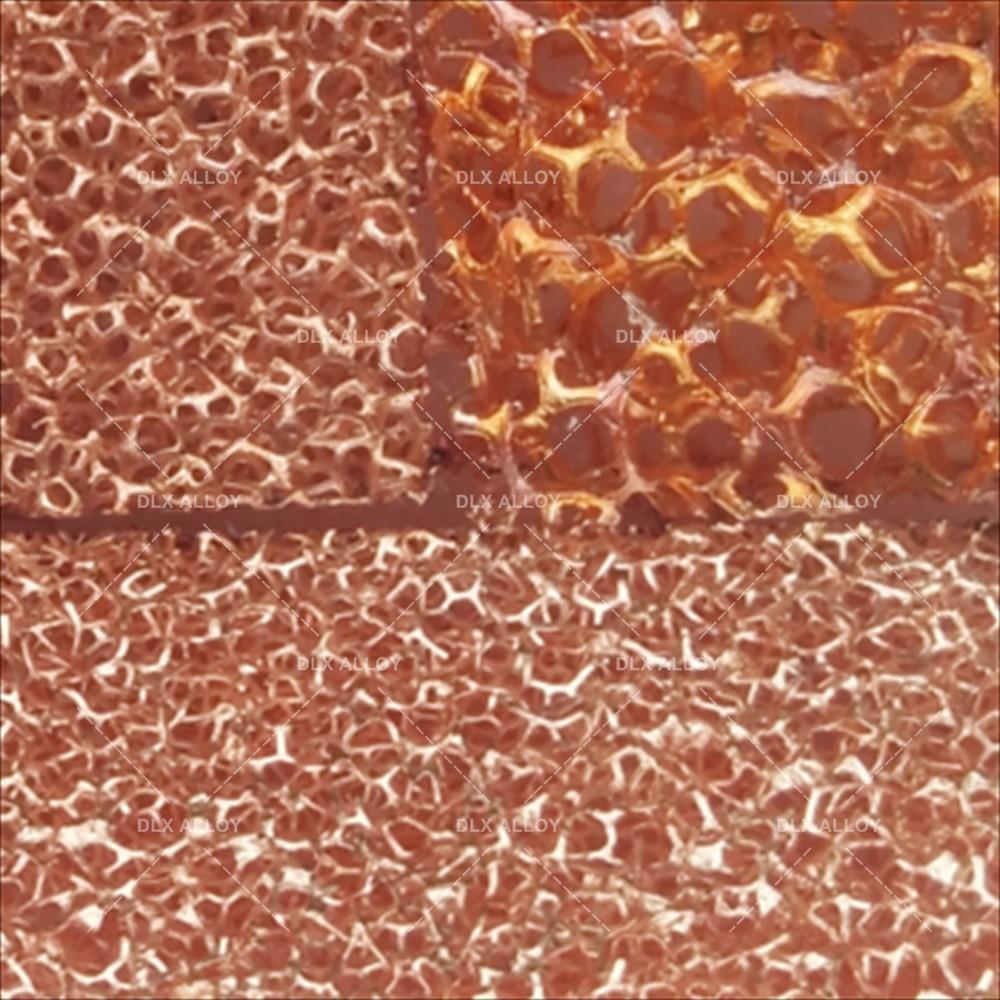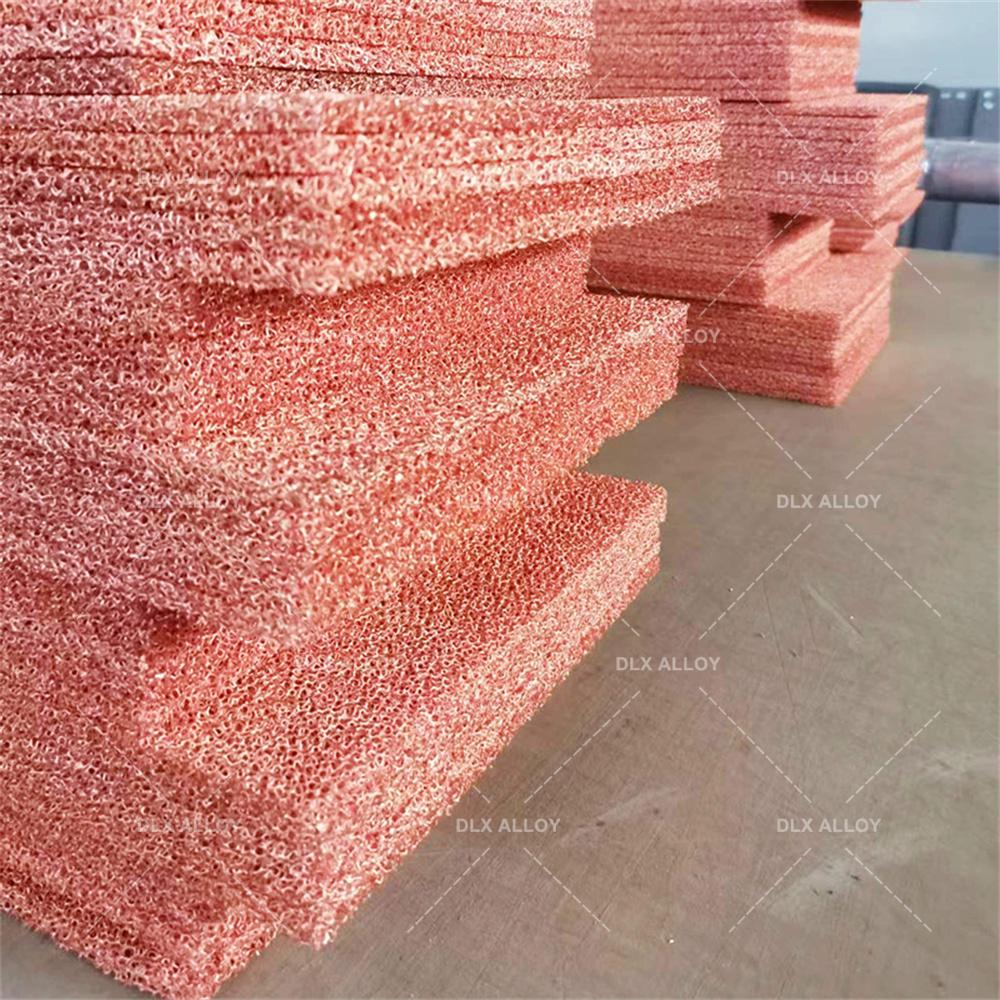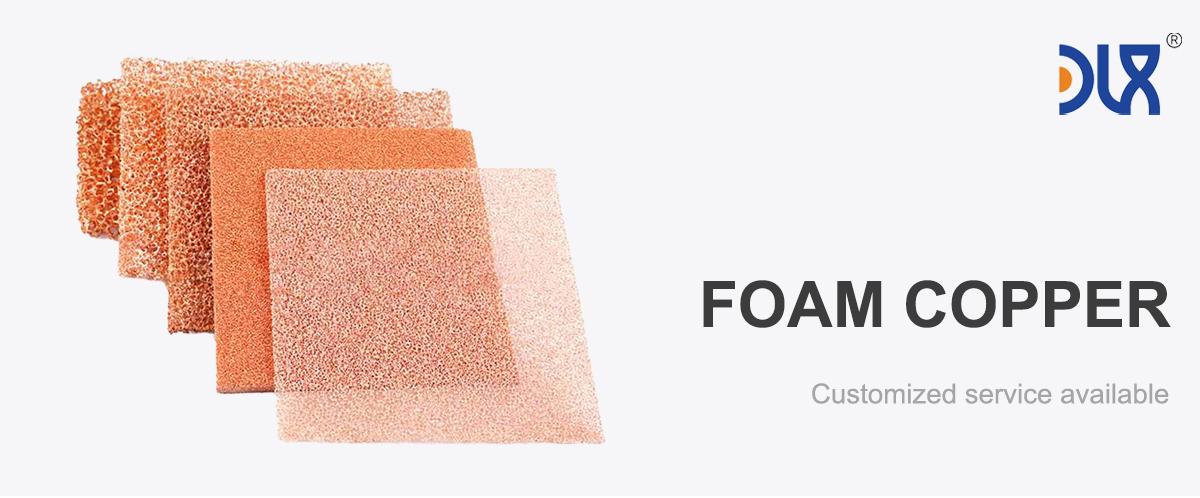
Our open-cell Copper Foam with 95% porosity is a game-changer for heat exchangers, delivering top-tier heat transfer in a lightweight, durable package. Designed for industries like automotive and aerospace, it’s transforming how heat exchangers perform in demanding conditions. Let’s dive into what makes our copper foam special, explore its applications, unpack industry trends, and show why we’re leading the way in heat exchanger solutions.
For more details, pls directly contact us.
Our copper foam is a high-purity, porous material with a three-dimensional, open-cell structure, boasting an impressive 95% porosity. Weighing just 0.5-1.5 g/cm³, it’s ultra-lightweight yet robust, perfect for high-efficiency heat exchangers. Its high thermal conductivity ensures rapid heat transfer, while the open-cell design promotes smooth fluid flow for optimal cooling. The foam’s good corrosion resistance ensures reliability in humid or high-temperature environments. We craft it using advanced electrodeposition and 3D printing, allowing us to customize pore size and density to fit your specific heat exchanger needs. Whether you’re cooling a car radiator or an industrial system, our foam delivers unmatched performance.
For more details, pls directly contact us.
Heat exchangers are all about moving heat efficiently, and our copper foam with 95% porosity is built to make that happen better than ever. The ultra-high porosity maximizes surface area for heat transfer, ensuring rapid cooling even in compact designs. The open-cell structure allows fluids like air or coolant to flow smoothly, reducing pressure drops and boosting efficiency. The lightweight design cuts system weight, a big win for fuel efficiency in vehicles or payload capacity in aerospace. Its thermal conductivity keeps temperatures in check, and its durability ensures long-lasting performance in demanding conditions. This mix of high porosity, lightweight design, and reliability makes our foam a must-have for advanced heat exchangers.
Industry Analysis: The Copper Foam Market Surge
The copper foam market is booming, driven by the global demand for efficient, lightweight thermal management solutions. Valued at $180.5 million in 2023, it’s projected to hit $246.7 million by 2030, growing at a CAGR of 5.42%. Automotive and aerospace industries are major drivers, as they seek compact, high-performance heat exchangers for EVs and aircraft. HVAC and renewable energy sectors are also adopting copper foam for its ability to handle high heat loads. The rise of industrial processing and data centers is fueling demand for efficient cooling materials.
Sustainability is a key force in this market. Regulations ROHS regulations and consumer demand are pushing industries toward recyclable materials and eco-friendly production. Our copper foam fits perfectly—it’s fully recyclable and made with energy-efficient processes. Innovations like nanostructured foams and 3D printing are opening new possibilities, allowing us to create tailored structures for specific heat exchanger applications. As industries prioritize efficiency, durability, and sustainability, our copper foam is poised to lead the heat exchanger market.
Applications: Where Our Copper Foam Shines
Our open-cell copper foam with 95% porosity is a versatile material, delivering results across a range of heat exchanger applications:
Automotive Radiators: It enhances cooling in EV and hybrid vehicle radiators, improving efficiency and range.
Aerospace Heat Exchangers: The foam supports lightweight, high-performance cooling for aircraft and satellites.
HVAC Systems: It boosts efficiency in air conditioning and heating systems for buildings and data centers.
Solar Thermal Systems: Our foam optimizes heat transfer in renewable energy systems, enhancing energy output.
Industrial Coolers: It supports high-performance cooling in chemical plants and power generation systems.
Electronics Cooling: The foam ensures efficient heat dissipation in high-power electronic systems.
Industry Trends: What’s Driving Copper Foam Forward
The copper foam market is moving fast, and we’re staying ahead of the curve. Here are the trends shaping the industry:
Compact Cooling Demand: Automotive and aerospace industries prioritize smaller, more efficient heat exchangers, and our foam delivers.
Sustainability Push: Eco-friendly production and recyclable materials are must-haves, and our foam aligns with sustainable manufacturing.
Electrification Boom: The rise of EVs and hybrids is driving demand for lightweight, high-performance cooling solutions.
Nanostructured Foams: Advances in nanotechnology are enabling ultra-high-porosity foams, boosting heat transfer efficiency.
Customization Surge: 3D printing and electroforming let us tailor foam structures for specific cooling needs.
Data Center Growth: The expansion of cloud computing and AI is fueling demand for efficient heat exchanger materials.
Why Choose Our Copper Foam?
We’re not just making copper foam—we’re crafting solutions that redefine heat exchanger performance. Here’s why our open-cell copper foam stands out:
95% Porosity: Ultra-high porosity maximizes heat transfer and fluid flow, outperforming traditional materials.
Superior Thermal Conductivity: It ensures rapid heat dissipation, critical for high-performance cooling systems.
Lightweight Design: At 0.5-1.5 g/cm³, our foam cuts weight without sacrificing durability, ideal for EVs and aerospace.
Customizable Structure: We tailor pore size and density to fit your specific heat exchanger needs, ensuring optimal performance.
Eco-Friendly Edge: Fully recyclable and produced with sustainable methods, our foam aligns with green initiatives.
Expert Support: Our team partners with you from design to deployment, offering expertise to tackle your toughest cooling challenges.
Comparison Parameters Table
Parameter | Copper Foam (95% Porosity) | Aluminum Fins | Steel Fins | Ceramic Exchangers |
|---|---|---|---|---|
Thermal Conductivity | High (excellent heat transfer) | Moderate (lower than copper) | Low (poor heat transfer) | Low (poor heat transfer) |
Porosity | High (95%, customizable) | Low (limited surface area) | Low (limited surface area) | Low (fixed structure) |
Weight | Lightweight (0.5-1.5 g/cm³) | Lightweight (but less porous) | Heavy (denser than copper) | Heavy (denser than copper) |
Fluid Flow Efficiency | High (open-cell structure) | Moderate (restricted flow) | Moderate (restricted flow) | Low (poor flow characteristics) |
Corrosion Resistance | Good (resists moderate environments) | Moderate (prone to oxidation) | Poor (prone to rust) | Good (but brittle) |
Mechanical Durability | High (withstands vibrations/heat) | Moderate (prone to deformation) | High (but heavy) | Low (prone to cracking) |
Recyclability | Fully recyclable | Recyclable (energy-intensive) | Recyclable (energy-intensive) | Limited (difficult to recycle) |
Cost-Effectiveness | Moderate (long lifespan, high performance) | Low (cheaper but less effective) | Low (shorter lifespan) | High (expensive production) |
Our copper foam outperforms other heat exchanger materials. Aluminum fins are lightweight but less porous, limiting airflow and cooling efficiency. Steel fins are durable but heavy and less thermally conductive. Ceramic exchangers are stable but heavy and restrict fluid flow. Our copper foam hits the sweet spot: ultra-high porosity, lightweight design, superior thermal conductivity, and solid durability, all backed by sustainable production.
We go beyond the product itself. Our end-to-end support—from custom design consultations to system integration—ensures you get the most out of our foam. Our advanced manufacturing techniques, like electrodeposition and 3D printing, deliver consistent quality and tailored solutions that competitors can’t match.
Looking to the Future
The future of open-cell copper foam with 95% porosity is bright, and we’re excited to lead the way. As industries like automotive, aerospace, and renewable energy push for more efficient, sustainable cooling solutions, the demand for high-performance materials will skyrocket. We’re investing heavily in R&D to push the boundaries of what our foam can do, from nanostructured designs for ultra-efficient heat exchangers to high-density options for industrial cooling. Our commitment to sustainability means we’re constantly refining our processes to reduce waste and energy use, aligning with global environmental goals.
Our open-cell copper foam isn’t just a material—it’s a solution for the cooling challenges of tomorrow. It’s lightweight, efficient, and built to power the next generation of heat exchangers. Ready to see how it can transform your project? Let’s talk about making it happen.
For more details, pls directly contact us.
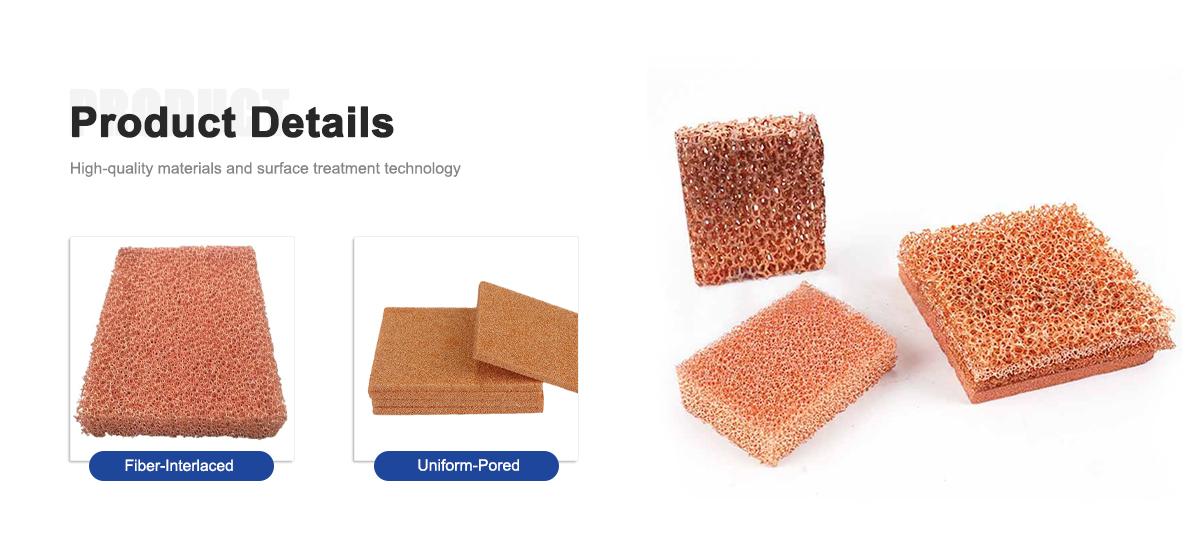
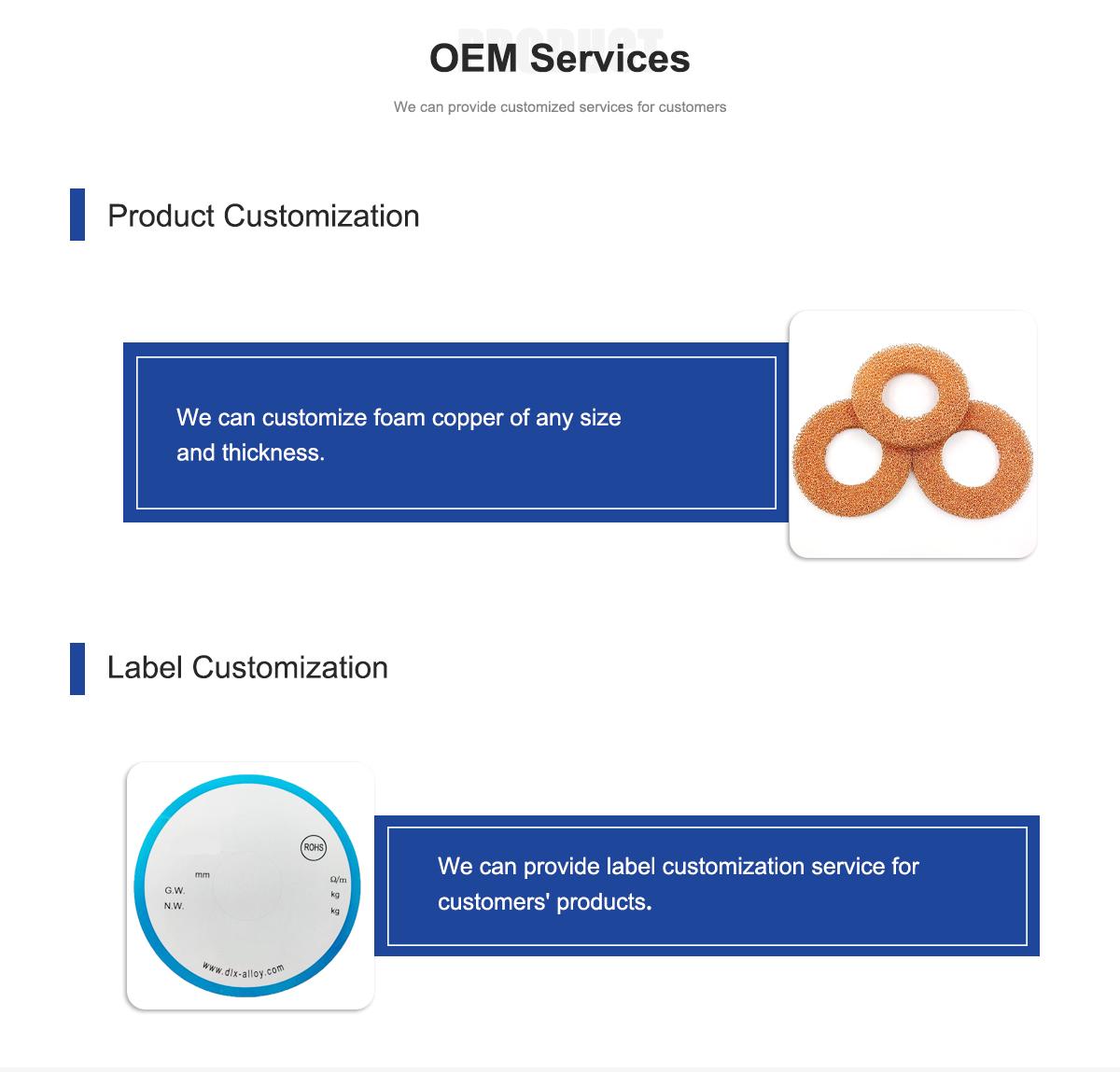
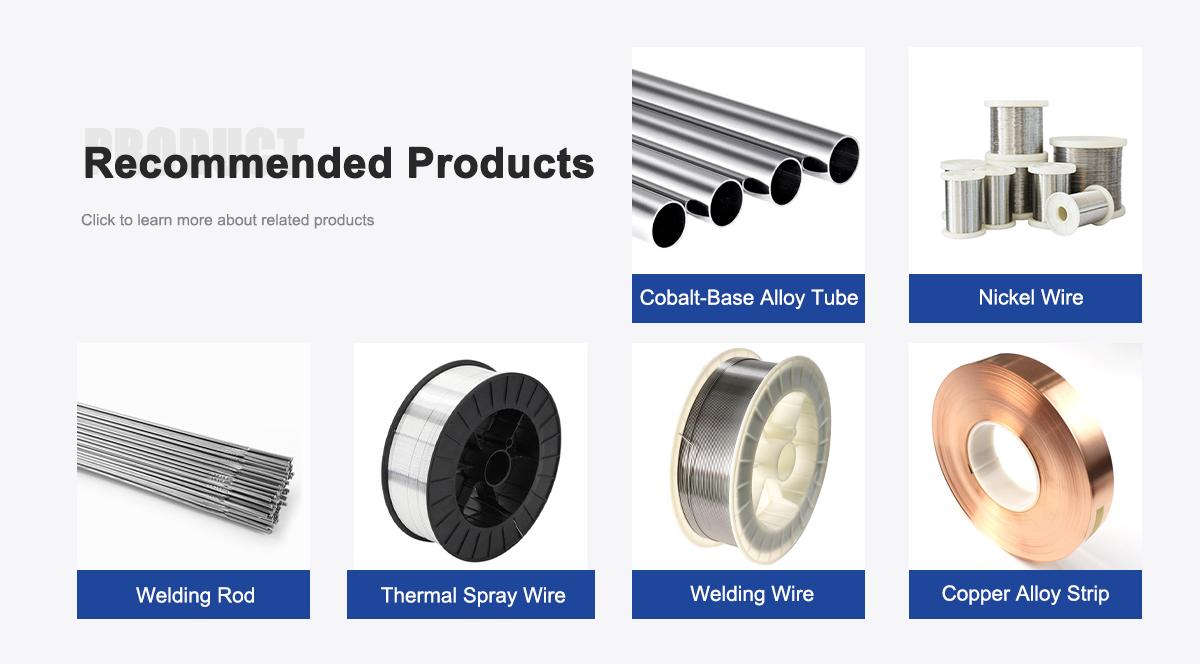
About Us:
Our 12,000㎡ factory is equipped with complete capabilities for research, production, testing, and packaging. We strictly adhere to ISO 9001 standards in our production processes, with an annual output of 1,200 tons. This ensures that we meet both quantity and quality demands. Furthermore, all products undergo rigorous simulated environment testing including high temperature, high pressure, and corrosion tests before being dispatched, ensuring they meet customer specifications.
For all our clients, we offer timely and multilingual after-sales support and technical consulting, helping you resolve any issues swiftly and efficiently.

Client Visits
Building Stronger Partnerships

We support all kinds of testing:


FAQs:
What is open-cell copper foam with 95% porosity?
It’s a lightweight, highly porous copper material with 95% porosity, designed for high-efficiency heat exchangers.How does copper foam improve heat exchangers?
Its high porosity and thermal conductivity maximize heat transfer and fluid flow, boosting exchanger efficiency.Which industries use this copper foam?
Automotive, aerospace, HVAC, renewable energy, and industrial processing rely on it for thermal management.Why is 95% porosity important for heat exchangers?
It ensures maximum surface area for heat transfer and efficient fluid flow, optimizing cooling performance.What are the key applications of this copper foam?
It’s used in automotive radiators, aerospace heat exchangers, HVAC systems, solar thermal systems, and industrial coolers.How does copper foam compare to other heat exchanger materials?
It offers higher porosity, better thermal conductivity, and lighter weight than alternatives like aluminum or steel fins.What are the latest trends in copper foam for heat exchangers?
Growing demand for compact cooling, nanostructured foam advancements, and sustainable production are driving growth.Is this copper foam eco-friendly?
Yes, it’s fully recyclable, supports energy-efficient cooling, and is produced with sustainable methods.


